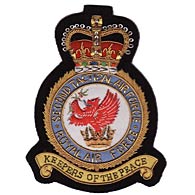ALG B-17 – Carpiquet
Battle of Normandy
This page presents the history of ALG (Advanced Landing Groud) B-17, used by the Royal Air Force during the Battle of Normandy.

Location: Carpiquet, Calvados (14)
Code: B-17
Coordinates: 49°10’36 »N – 000°27’26 »W
Construction: from July 13 to August 8, 1944 by Royal Engineers 24th Airfield Construction Group
Operational period: from August 8, 1944 to April 21, 1945
Number of airstrips: 2
Airstrip 1: Pierced Steel Plank (PSP)
Length: 1 524 m
Width: 36,5 m
Airstrip 2: cement
Length: 1 800 m
Width: 36,5 m
Units:
![]()
![]()
![]()
![]()
– 135 Wing (222 squadron, 349 squadron – Belgium, 485 RNZAF squadron – New Zealand) using Spitfire aircraft.
– 142 Wing (264 squadron, 604 squadron) using Mosquito III aircraft.
– 148 Wing (409 RCAF squadron – Canada) using Mosquito III aircraft.
ALG B-17 history:
This airfield was already used by the French armed forces before the war and then occupied by the Germans. It has a 1,800-meter-long cement airstrip that is destroyed during bombings from May to July 1944.
After heavy fighting fought by Canadians during Operation Windsor, July 4 to 9, 1944, the airfield ruins came under Allied control. During the rehabilitation of the cemented runway, the Allies install a cross ALG that they cover with PSP.
Several squadrons pass through the ALG B-17 Carpiquet during the end of the Battle of Normandy. Volunteers of different nationalities engaged in the Royal Air Force are based there, in particular within the 604 squadron. In 1945, the aerodrome is used as a depot.
Remains:
– Several bunkers are still visible despite the work of setting up the current Caen-Carpiquet airport.
– Commemorative stele at Caen-Carpiquet airport.
